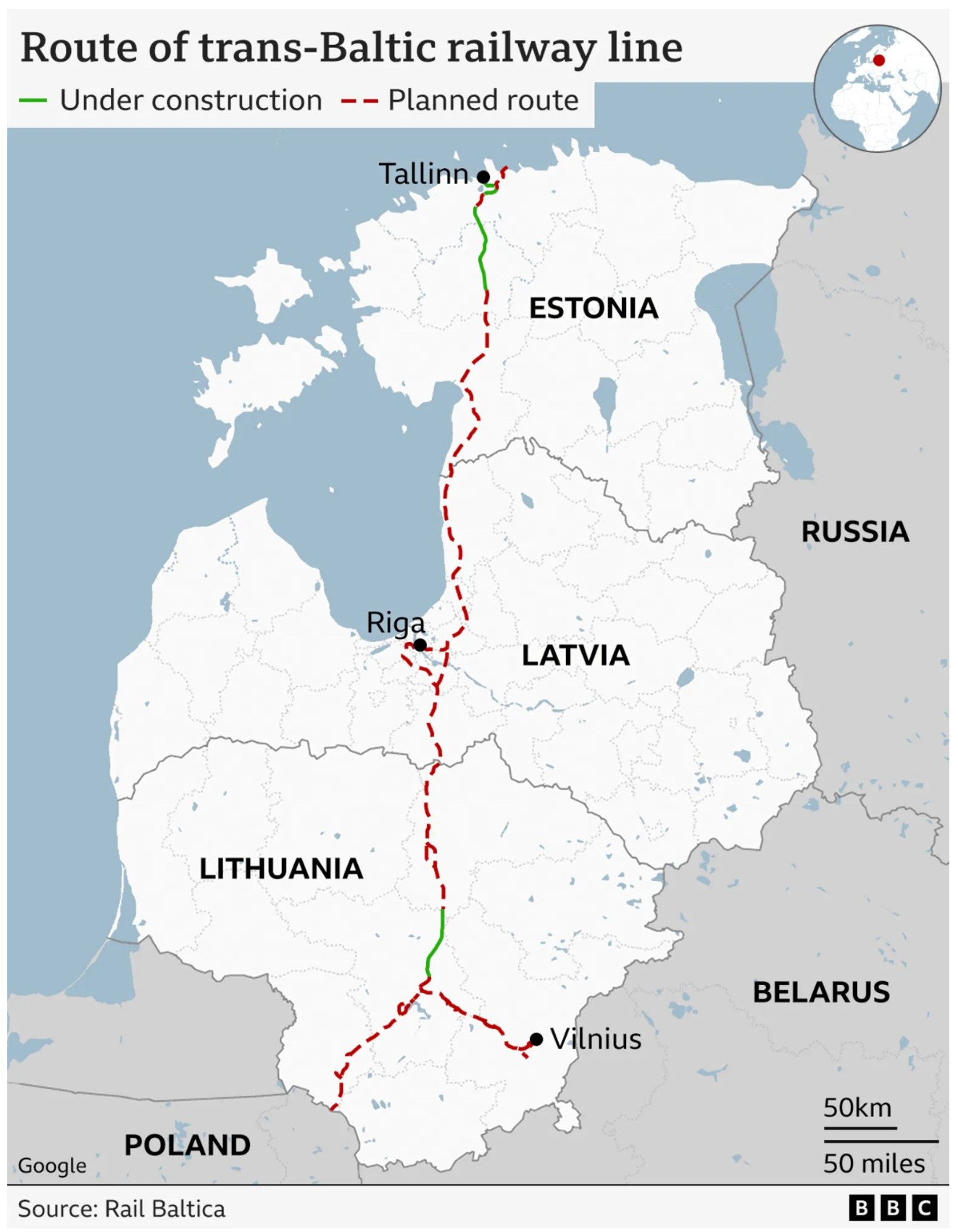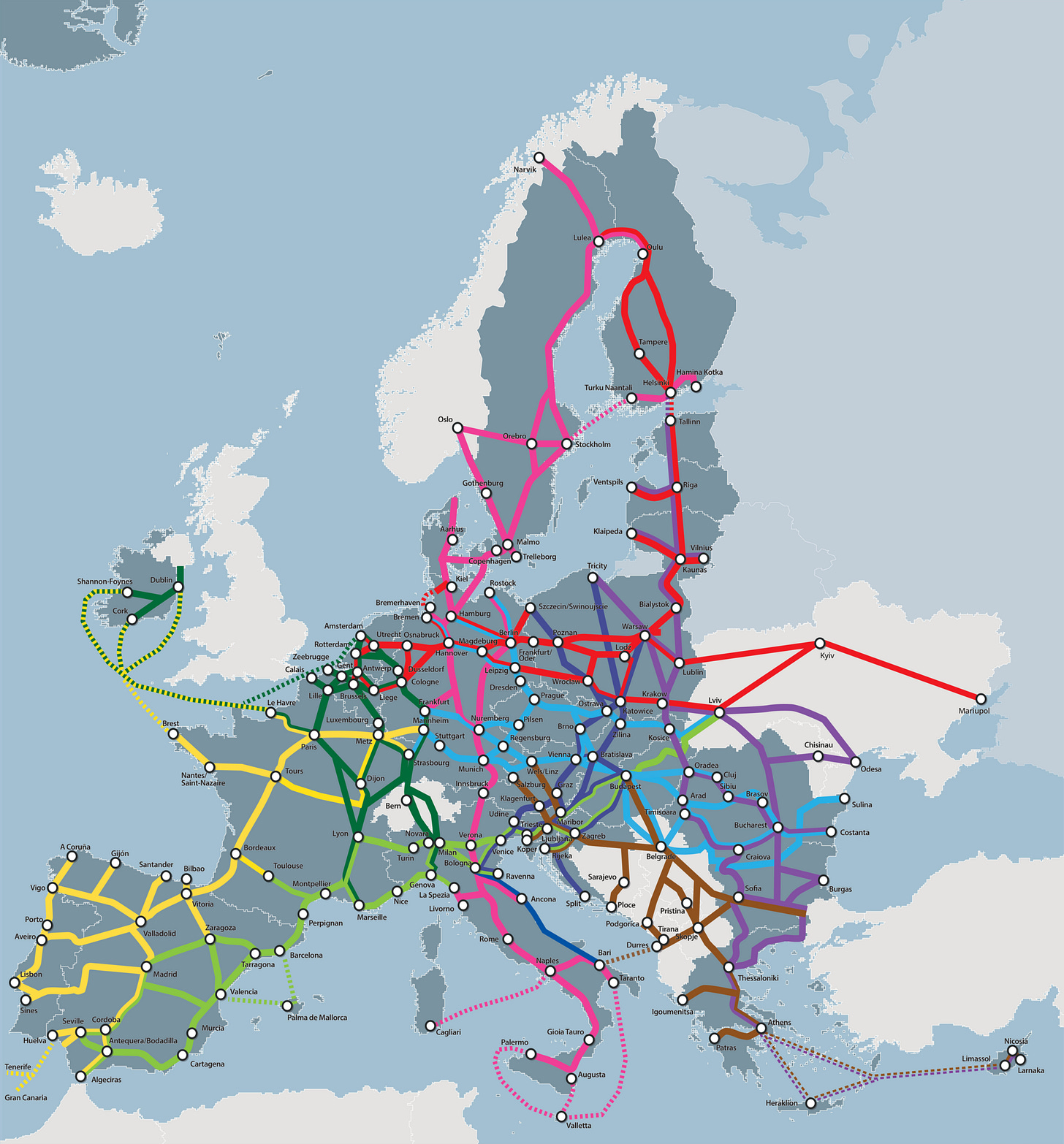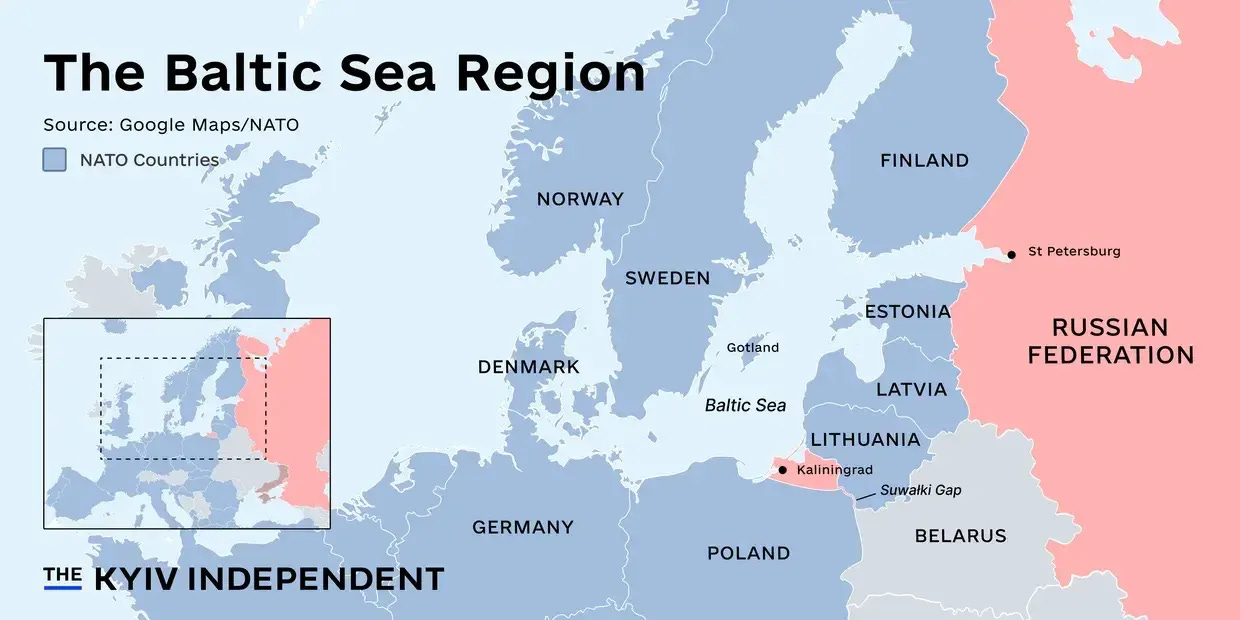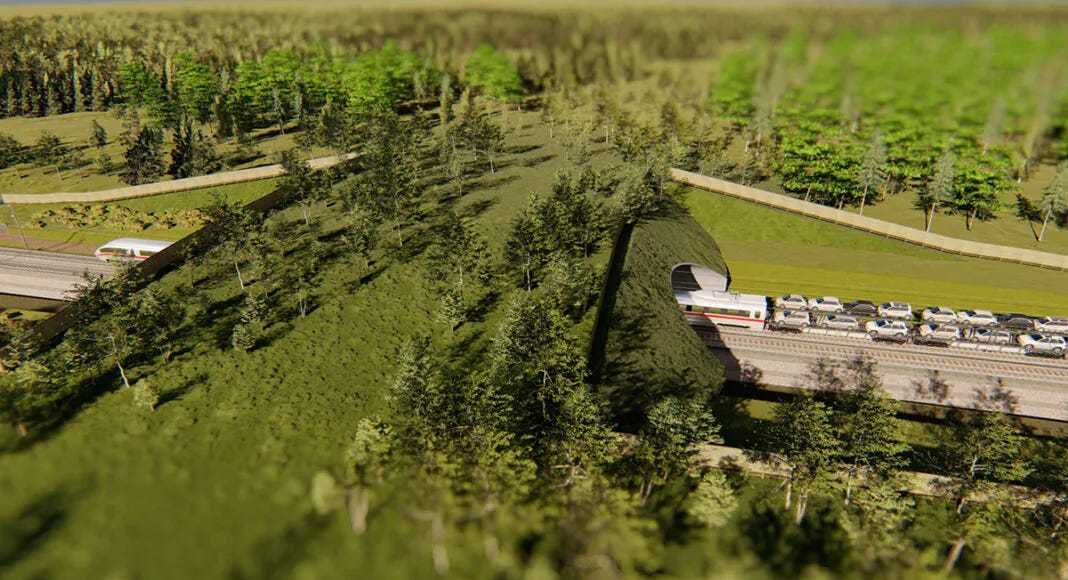The Rail Baltica Megaproject
The 870km high-speed railway connecting the Baltics to Europe is massively over-budget — but following the Russian invasion of Ukraine, it's more important than ever.
tl;dr
Rail Baltica is an 870km high-speed railway that connects the Baltic states to Poland and the rest of Europe.
The Russian invasion of Ukraine has made the project strategically important to European defense, supporting potential Nato troop movements.
Rail Baltica comes in at USD $17 million per km — dwarfed by the $35 million per km for the Las Vegas High-Speed Rail, $127 million per km for the California High-Speed Rail, and an eye-watering $300 million per km for the HS2 in the UK.
A geopolitical railway
Rail Baltica is a high-speed rail project that will connect Lithuania, Latvia, and Estonia with Poland and the wider European rail network.
The railway will stretch 870km, with a design speed of 240 km/h, making some journeys competitive with airplane travel. It will also be interoperable with the existing European network, unlike the current Baltic railway network, which uses Russian-grade tracks.
But like all megaprojects, development hasn’t been smooth. The scope of the project has been pulled back as costs have ballooned, and the delivery date has been pushed four years to 2030.
Critics argue that the project has crowded out other critical infrastructure projects in the region, while proponents point out that the invasion of Ukraine makes the network critical for potential movements of Nato troops should Russia invade.
The history of Rail Baltica
The railway lines in the Baltics were initially constructed by the Russians in the nineteenth century in Russian gauge of 1520 mm, wider than the 1435 mm gauge used by the Europeans.
Apparently, this was intended to make European invasion more difficult (it didn’t work). But for the Baltics states today, Russian gauge railways make freight and passenger transportation slower and more cumbersome, with trains needing to offload in Poland.
Folks have been pitching the concept of Rail Baltica since the early nineties, though given the small population of the Baltic states — totaling little more than 6 million people — it hasn’t always been considered economically viable.
Enter the Trans European Transport Network (TEN-T). The TEN-T aims to build transport infrastructure across all of Europe, with all major nodes connected by 2030, and the project as a whole will be completed by 2040. €500 billion has been suggested for the entire network, which includes 65,000 km of railway (not just high speed), 136,000 km of roads, and 23,000 km inland waterways.
Spiraling costs
The TEN-T unlocked the funds required for Rail Baltica, with the EU budgeting to provide 85% of the costs — on an initial project estimate of €5.8 billion in 2017 (up from the original €3.5 billion estimate in 2010).
But as with every major high-speed rail project, costs have not stayed within this initial scope. The most recent estimate is that the project will cost over €24 billion — an escalation threatening to put the entire project at risk.
As a result, the scope of the project has been scaled back. Fewer stations are planned, and most of the project is single-tracked. The project has also been pushed back to 2030, four years after its original planned completion date.
There is real concern that the small Baltic states will face difficulties funding even their relatively small share of the mega-project. National auditors for the Baltic states warn that delays and funding shortfalls may push the project out past 2030 — even though further delays will make the project even more expensive.
Military mobility
While criticism of the projects has become louder, the railway has become strategically even more important following the Russian invasion of Ukraine.
Estonia and Latvia share a border with Russia, while Lithuania is next to Russian enclave Kaliningrad. Lithuania’s recent move to fortify the bridge to the Russian enclave of Kaliningrad shows how immediate these concerns are in the region.
As the BBC reports, there are currently 10,000 Nato troops in the region, which could jump to 200,000 in the event of an invasion. Rail Baltica is a key point of connection with Europe, and on completion, will make it possible for troops to travel directly from the Netherlands to Tallinn.
How does it compare with other high-speed projects?
Geopolitics aside, the cost of high-speed rail projects like these is eye-watering. How does Rail Baltica compare to other high-speed rail projects around the world?
While there are obvious variables, including the cost of building through major metro areas, we thought we’d do some back-of-the-napkin comparisons.
With Rail Baltica’s new budget of €24 billion, it comes in at USD $17 million per km.
The Brightline West high-speed rail project in Las Vegas costs $35 million per km.
The California High-Speed Rail project costs $127 million per km.
However, all of these are dwarfed by HS2 in the UK, which costs $300 million per km.
What else is interesting about Rail Baltica?
A project this size has no end of interesting stories. But to save me writing another few thousand words, I thought I’d share a few highlights:
The 1500-metre bridge across the Neris River in Lithuania will be 40 metres high with 376 piles, requiring 7.6 thousand cubic meters of concrete.
Rail Baltica runs through areas used by the USSR — and later Latvian — military, which still have unexploded ordnances from World War II.
The project recently shortlisted five consortia for the Lithuania section of the project, valued at up to 932 million euros.
According to the Delivery Manager for Rail Baltica in Lithuania, “the project document for the first ten kilometers is over 20,000 pages long.”
To avoid habitat fragmentation through the ‘barrier effect’, the project creates ecoducts to allow animals to cross the railway.
On the podcast
On a recent podcast, we discussed the rising wave of investment in planning tools, American contractor Tutor Perini's strategic shift to limit project bids to $500 million, and the unique Antwerp Port House, detailing the challenges of building a new structure over a heritage-protected building.
What we’re reading this week
The Impossible Build has an entertaining short video on the Rail Baltica project.
This isn’t exactly reading, but I enjoyed the BBC’s Business Daily podcast on Rail Baltica.
Following Jason’s newsletter last week on consolidation in the construction industry, Australian contractor Georgiou Group is in the latter stages of being acquired by STRABAG for an undisclosed sum.





